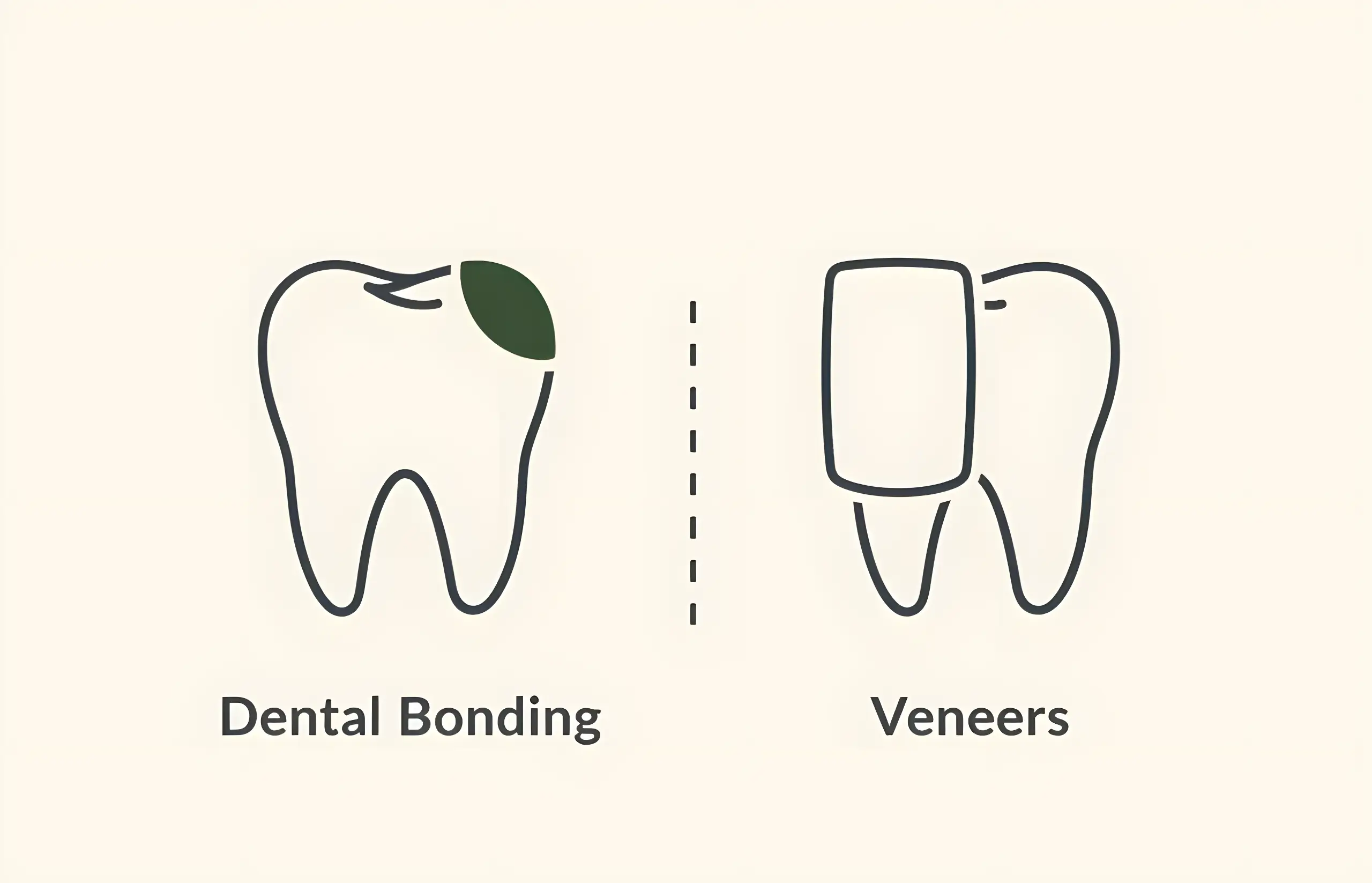Only the smallest tooth damage qualifies for veneers or tooth bonding techniques. If the damage is too severe, a dentist will recommend a dental implant or a crown instead.
About Bonding and Veneers
Tooth bonding fixes a chipped or damaged tooth by replacing the missing portion with hardened resin. This resin is applied to the tooth while it is soft, then hardened with a high-intensity light. This has replaced silver filling in many cases because even though they accomplish the same thing, the bonding process produces a far more natural result that is the same color as the original tooth.
A veneer is a thin piece of ceramic or porcelain that goes in front of the damaged tooth. It acts as a shell, not fulfilling the entire function of a natural tooth, but at least working better than the damaged tooth would and providing some protection for that tooth. Veneers are also used to create a more beautiful smile, and they can be placed in quickly and easily.
Which Is Better?
It really depends on what you want out of the procedures when you have to pick between veneers and bonding. Bonding may look a bit more natural, but it is also more prone to staining. If you drink coffee or smoke, then your bonding is going to start to show.
Veneers can look more natural but only if they are done by an accomplished dental professional. Anyone can put in a veneer, but it won't look right unless that person is experienced and knows what they are doing. Many people complain of veneers looking too fake, and they can if they are not installed properly.
Veneers can also be much costlier, usually ranging from $1,000 to $2,500 per tooth. Bonding only costs a couple of hundred dollars per tooth. But where veneers excel is in their longevity. A veneer can last as long as 15 years, whereas a dental bonding is probably only going to last a maximum of seven years.
If the damage to the tooth is minor and only a very small piece is missing, it makes more sense to go with the bonding. It isn't a very involved process, and even if it stains, it should not be very evident. For more extensive damage (but not so extensive a crown is necessary), a veneer may be a better choice. It can look more natural, and it will provide better protection for your teeth over a longer period of time.
Your dental professional can give you more information about which one is right for you. The final decision may be yours to make, but you should heed your dentist's advice. If you think your dentist may not be experienced in the kind of procedure you need, be sure to use someone who feel you can trust and who you know has experience in producing great results. You may want to ask some of the dentist's patients who have had the procedure done to see what their outcomes were like.
Sources and References
-
[1]
10-year practice-based evaluation of ceramic and direct composite veneersJournal of Dentistryhttps://pubmed.ncbi.nlm.nih.gov/35379471/
-
[2]
Survival Rates for Porcelain Laminate Veneers: A Systematic ReviewInternational Journal of Dentistry (PubMed Central)https://pmc.ncbi.nlm.nih.gov/articles/PMC8184312/
-
[3]
The Success of Dental Veneers According To Preparation Design and Material TypeThe Journal of Prosthetic Dentistry (PubMed Central)https://pmc.ncbi.nlm.nih.gov/articles/PMC6311473/
-
[4]
Durability of bonds and clinical success of adhesive restorationsDental Materials (PubMed Central)https://pmc.ncbi.nlm.nih.gov/articles/PMC3863938/
-
[5]
Long-Term Survival and Complication Rates of Porcelain Laminate Veneers in Clinical Studies: A Systematic ReviewThe International Journal of Prosthodontics (PubMed Central)https://pmc.ncbi.nlm.nih.gov/articles/PMC7961608/
All sources accessed and verified on . Medical information reviewed for accuracy and compliance with current guidelines.
Related Articles

Dental Bonding v Veneers
Complete comparison guide covering porcelain veneers versus dental bonding including success rates, longevity statistics, costs, treatment duration, and choosing the right option

Dental Bonding – Costs and Information
Comprehensive guide to dental bonding procedures, including composite bonding, adhesive bonding, treatment process, and costs ranging from £90 to £800 depending on the type of bonding
About The Dental Guide
The Dental Guide is a trusted online resource providing evidence-based information about dental health, treatments, and procedures. Our content is created and reviewed by qualified dental professionals to help you make informed decisions about your oral health.
Our Mission
- Evidence-based dental information
- Expert-reviewed content
- Clear, accessible explanations
- Latest treatment options
- Patient-focused guidance
Editorial Standards
- GDC-registered dental professionals
- Peer-reviewed sources
- Regular content updates
- Medical accuracy verification
- Transparent authorship
Important Notice
The information on The Dental Guide is for educational purposes only and should not replace professional dental advice. Always consult with a qualified dentist for diagnosis and treatment recommendations tailored to your individual needs and circumstances.
Medically Reviewed
Reviewed by Dr. Nasim Mechoui , BDS (Bristol)
Share this article
Comments & Discussion
Have questions about dental implants? Share your thoughts or experiences.
